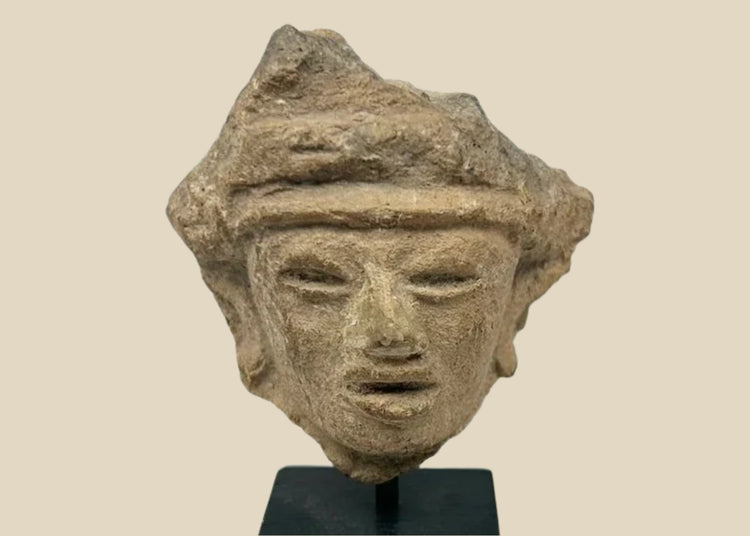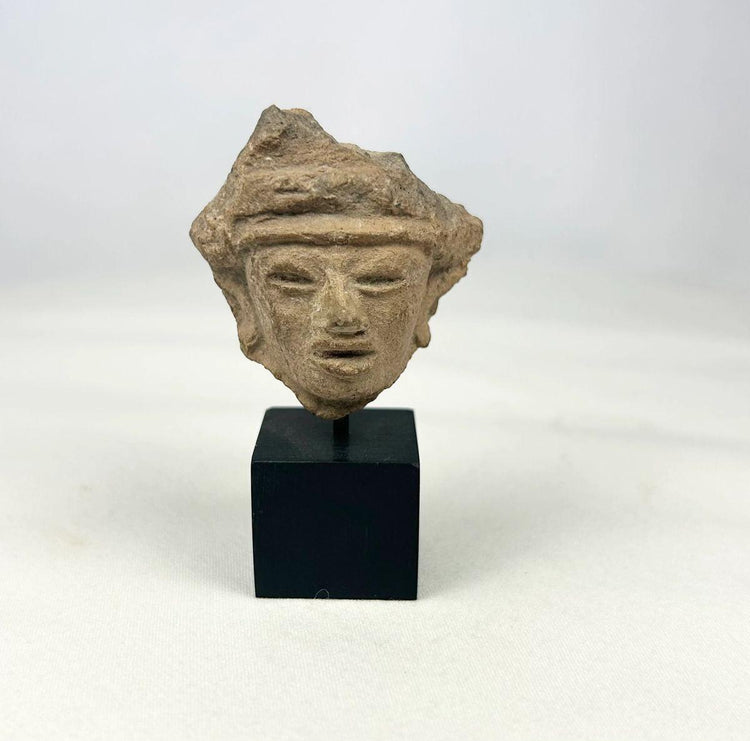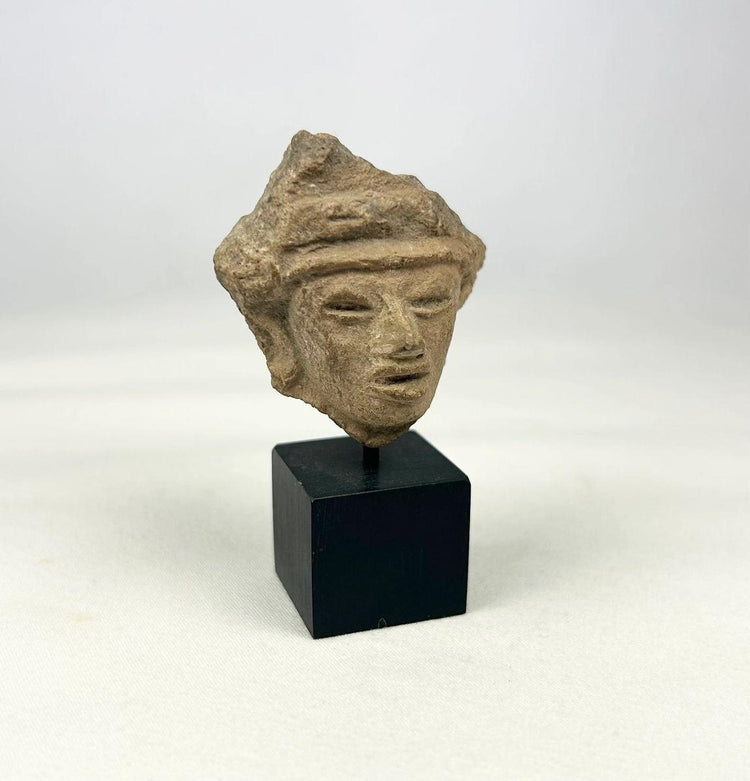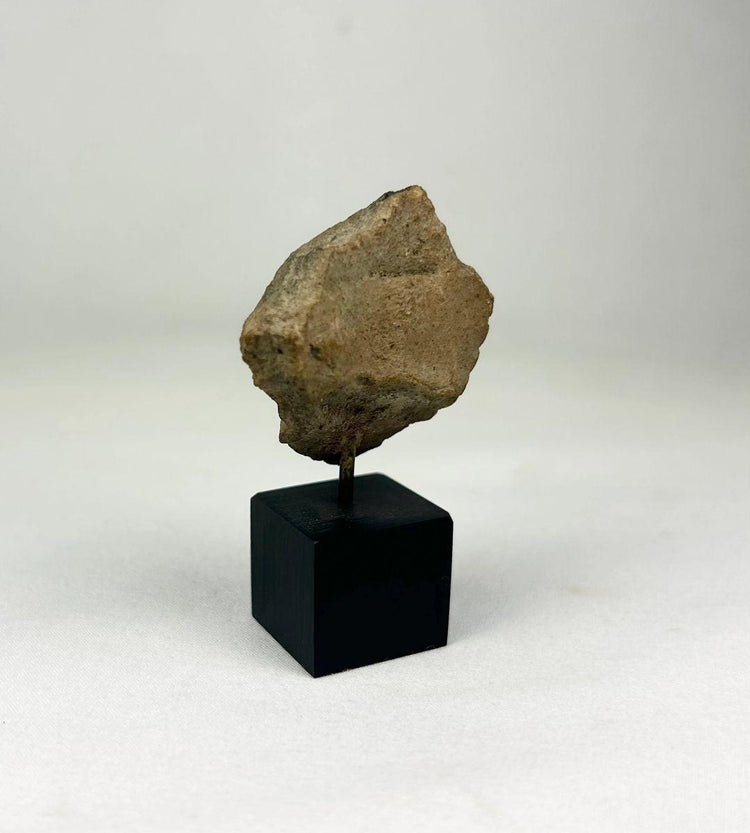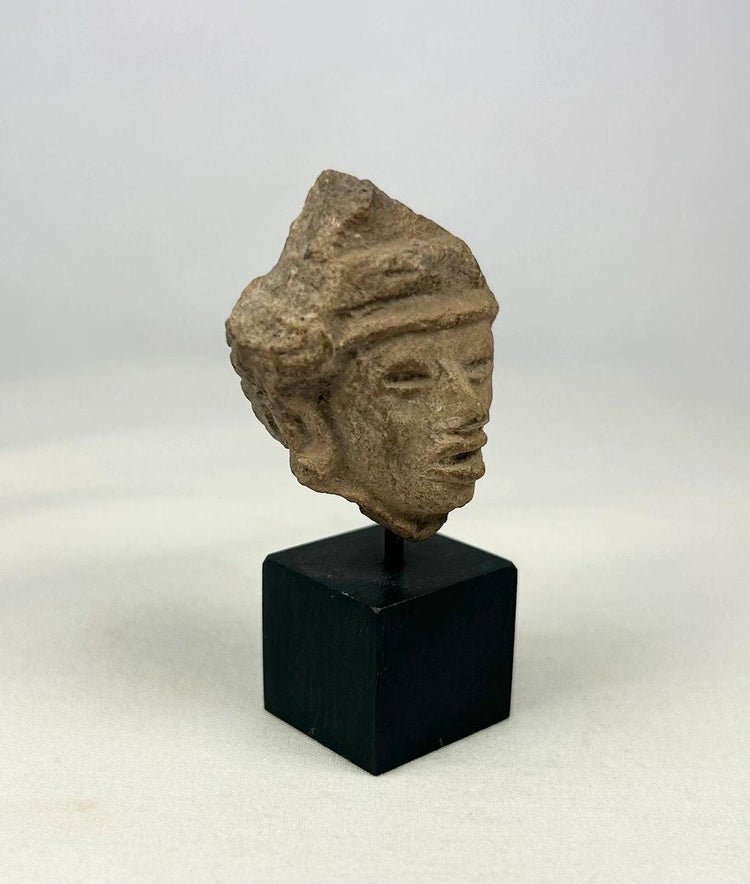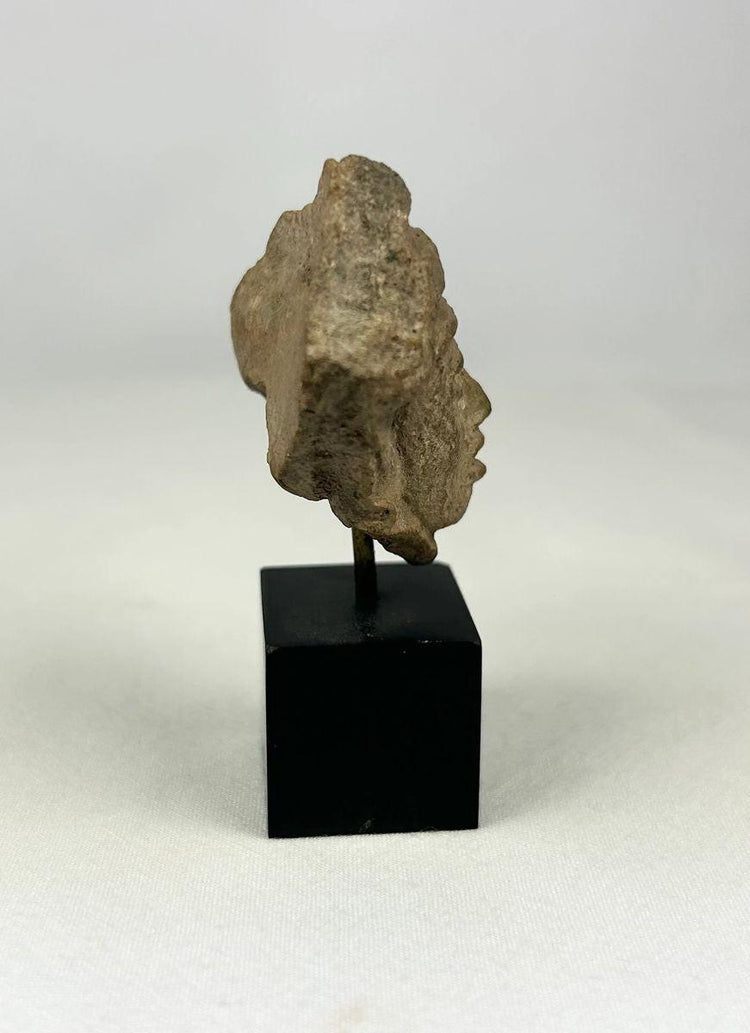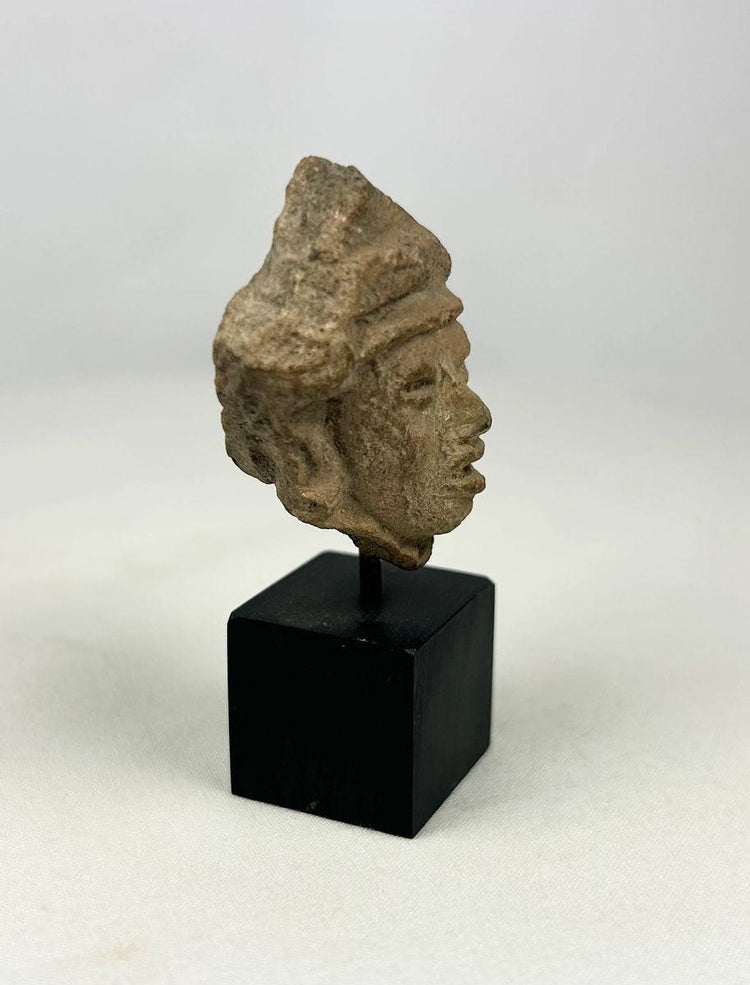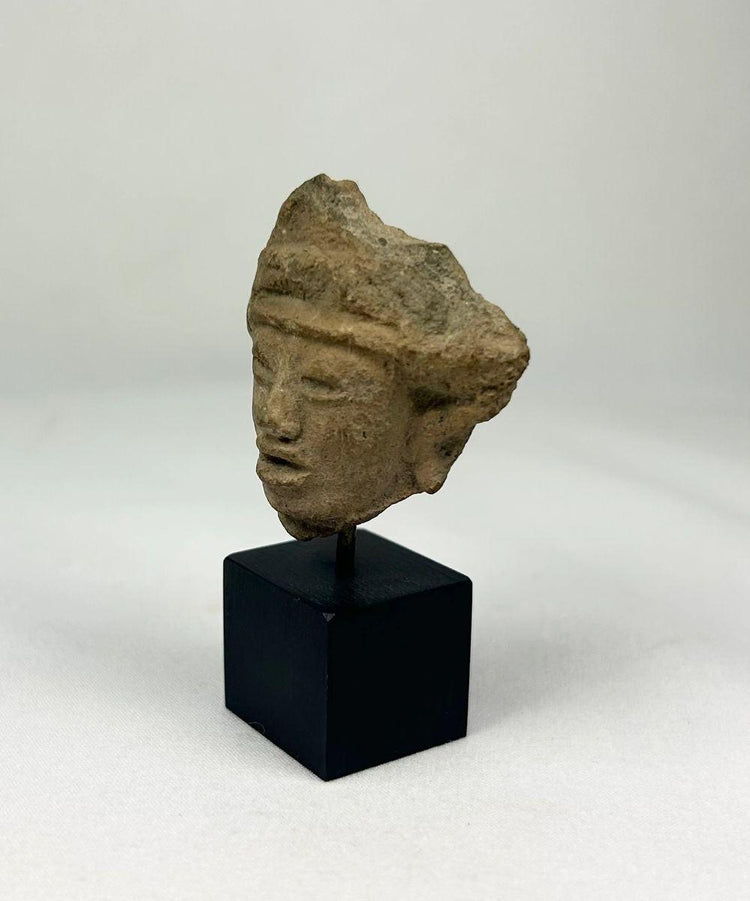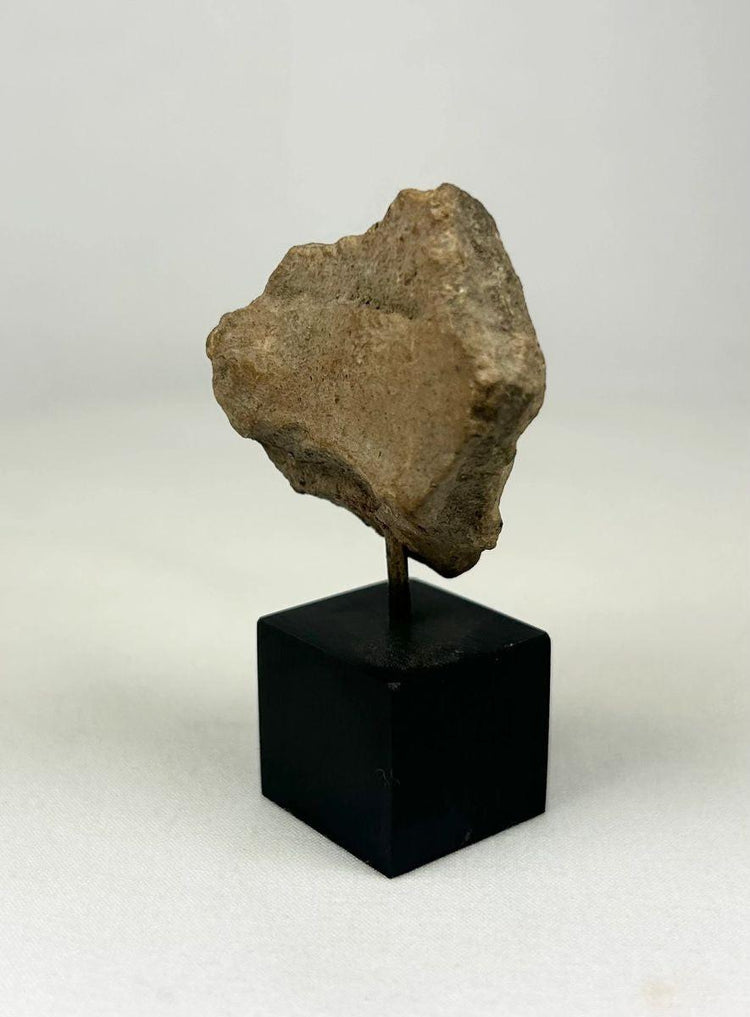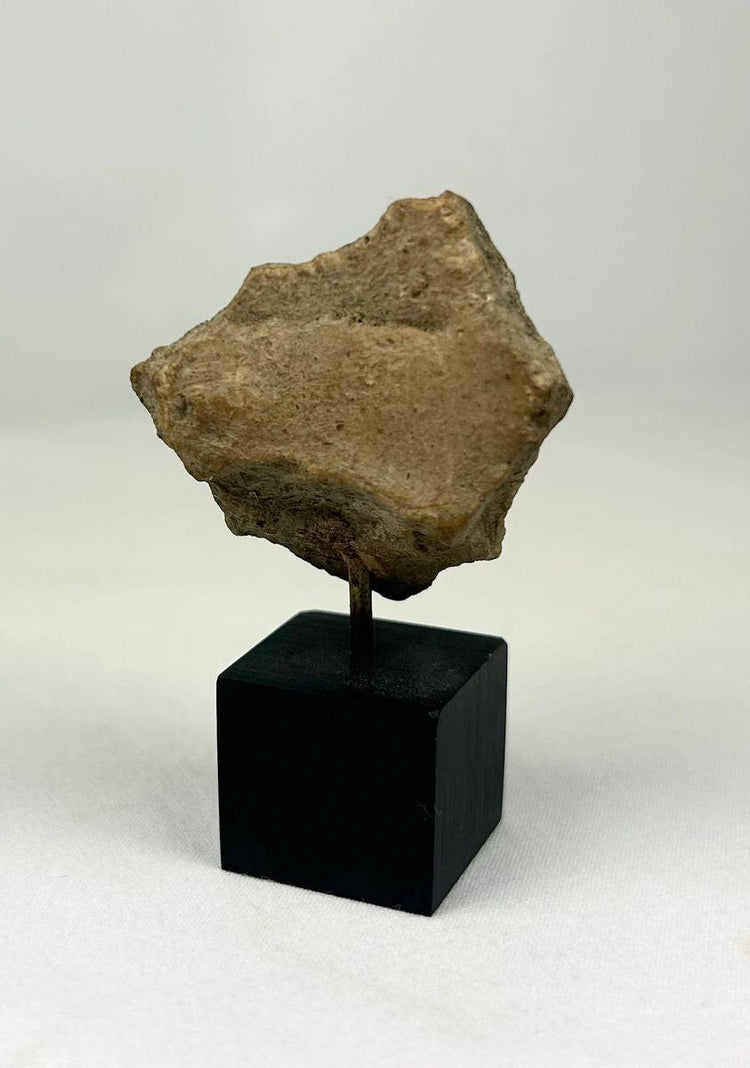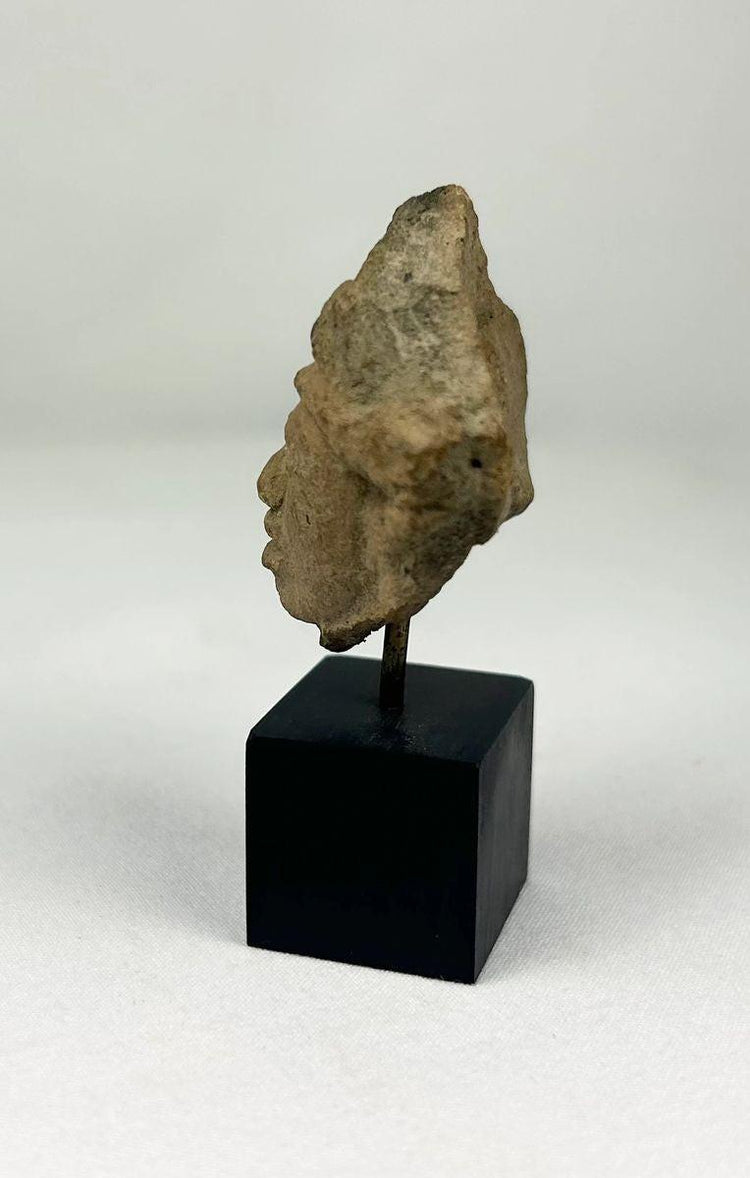Ancestor Spirit Effigy Fragment | West Mexico | Circa 200 BCE–300 CE
Description
More
Less
Historical Context & Origin
Region: Western Mexico (Nayarit, Jalisco, or Colima)
Material: Hand-modeled terracotta
Period: Late Formative to Early Classic, circa 200 BCE–300 CE
Description
This fragmentary terracotta head depicts a male figure, originally part of a larger votive or funerary sculpture associated with shaft tomb traditions. The expressive visage features almond-shaped eyes, a subtly defined nose, and parted lips, framed by a raised headband and stylized coiffure. Slight asymmetry and the hand-modeled finish highlight its individualized character, suggesting a personalized ancestral effigy. The fracture along the sides and top exposes the gritty clay matrix characteristic of West Mexican ceramics.
Features
- Expressive facial modeling with incised eyes and open mouth
- Prominent headband and stylized hair or headdress
- Fracture edges indicating it was once part of a larger figure
- Ochre-brown surface with mineral encrustation from burial context
- Mounted securely on a custom black wood block stand
Cultural Significance
Figures of this type were commonly interred in shaft tombs alongside elite individuals. They embodied concepts of lineage, identity, and ancestral guardianship, serving both protective and representational functions in funerary rites. The focus on human features underscored the importance of social continuity and cosmological belief in the afterlife.
Condition
Fragmentary (head only), with losses to the body and portions of the headdress. Surface weathering and mineral deposits consistent with archaeological burial. No evidence of modern restoration.
Dimensions (approximate)
Height: 2.5 in
Width: 1.5 in
Age
Circa 200 BCE–300 CE
Description
Historical Context & Origin
Region: Western Mexico (Nayarit, Jalisco, or Colima)
Material: Hand-modeled terracotta
Period: Late Formative to Early Classic, circa 200 BCE–300 CE
Description
This fragmentary terracotta head depicts a male figure, originally part of a larger votive or funerary sculpture associated with shaft tomb traditions. The expressive visage features almond-shaped eyes, a subtly defined nose, and parted lips, framed by a raised headband and stylized coiffure. Slight asymmetry and the hand-modeled finish highlight its individualized character, suggesting a personalized ancestral effigy. The fracture along the sides and top exposes the gritty clay matrix characteristic of West Mexican ceramics.
Features
- Expressive facial modeling with incised eyes and open mouth
- Prominent headband and stylized hair or headdress
- Fracture edges indicating it was once part of a larger figure
- Ochre-brown surface with mineral encrustation from burial context
- Mounted securely on a custom black wood block stand
Cultural Significance
Figures of this type were commonly interred in shaft tombs alongside elite individuals. They embodied concepts of lineage, identity, and ancestral guardianship, serving both protective and representational functions in funerary rites. The focus on human features underscored the importance of social continuity and cosmological belief in the afterlife.
Condition
Fragmentary (head only), with losses to the body and portions of the headdress. Surface weathering and mineral deposits consistent with archaeological burial. No evidence of modern restoration.
Dimensions (approximate)
Height: 2.5 in
Width: 1.5 in
Age
Circa 200 BCE–300 CE
You May Also Like




























